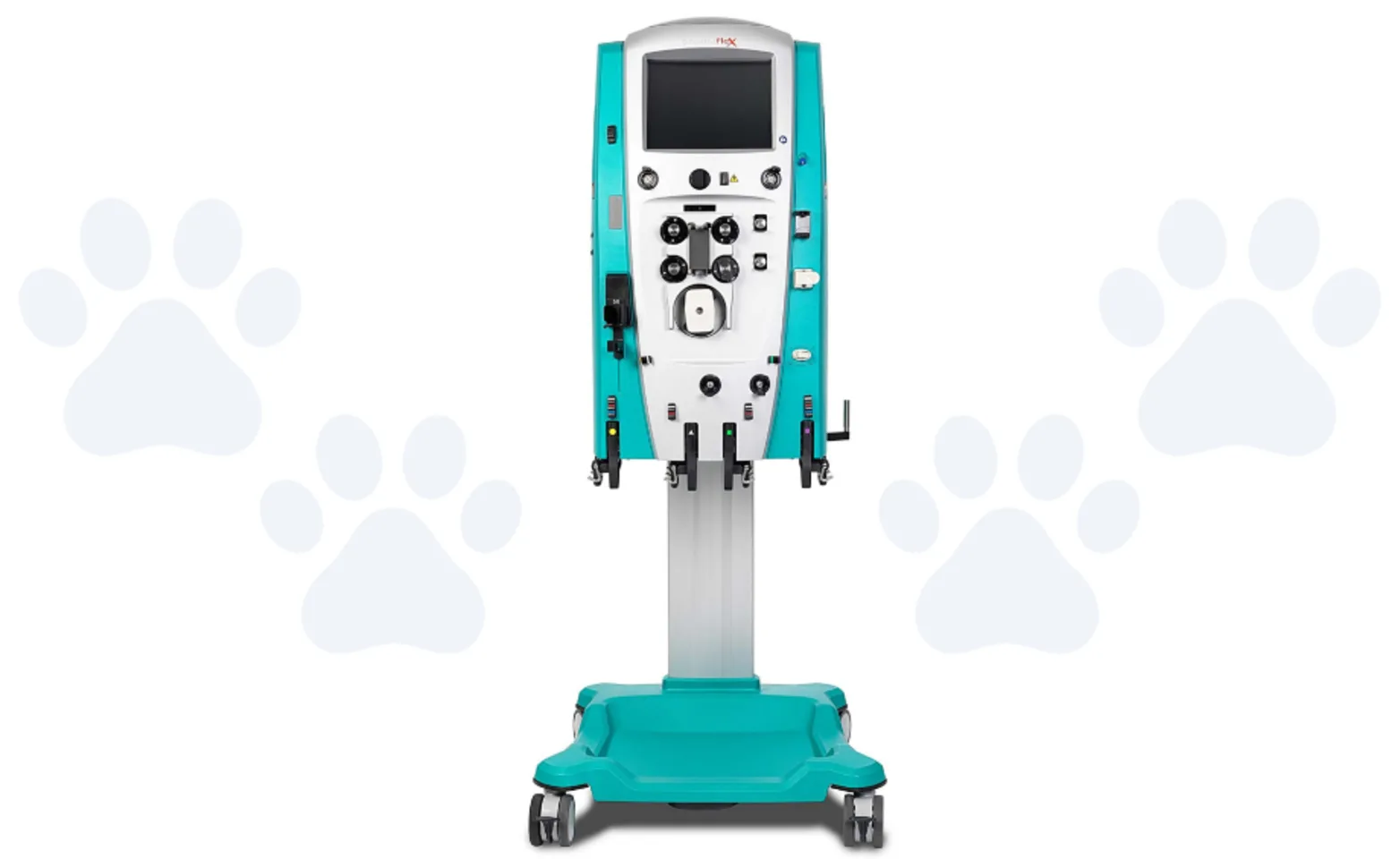Arizona Veterinary Emergency & Critical Care Center

Extracorporeal Services

How Hemodialysis Works and is Applied in Veterinary Medicine
The kidneys filter waste products and maintain fluid balance. When they don't function properly, waste can build up in the bloodstream resulting in uremia. Hemodialysis is a medical procedure that uses an artificial kidney to remove waste and toxins from the blood, restoring electrolyte balance and acid-base balance. This is the most effective treatment option for uremia, acute renal failure, overhydration, or acute toxicities not responding to other treatments.
Severe acute kidney injury
Acute poisoning (toxin specific – see Therapeutic Plasma Exchange page)
Severe overhydration and fluid overload
Severe electrolyte derangements
Severe chronic renal failure (not offered at this facility)

Timing of Dialysis Initiation:
The exact timing of the initiation of dialysis is a controversial topic, although the reasons behind it are easy to define. However, commencing dialysis earlier in the disease process can lead to better outcomes by preventing the adverse systemic effects of uremia. Therefore, dialysis should not be seen as a last resort or salvage procedure.
Goals of Dialysis:
Acute kidney injury is the most common use of hemodialysis in veterinary patients. Hemodialysis extends the window of opportunity for renal repair indefinitely. Dialysis does not fix the kidney injury per se, it simply provides the injured kidney time to repair. It is often this lack of time and subsequent clinical decline from uremia that unfortunately results in euthanasia in veterinary medicine. Hemodialysis is a viable alternative.

Length of Treatment and Prognosis:
The length of treatment is difficult to determine as it depends on the cause of the acute renal injury and the degree of renal damage. However, clients should be emotionally and financially prepared for on average 2-5 sessions over 1-3 weeks. The prognosis, similarly, varies depending on the cause of the acute renal injury as well as comorbid conditions, therefore, the risks/benefits of commencing dialysis need to be considered on a case-by-case basis.
